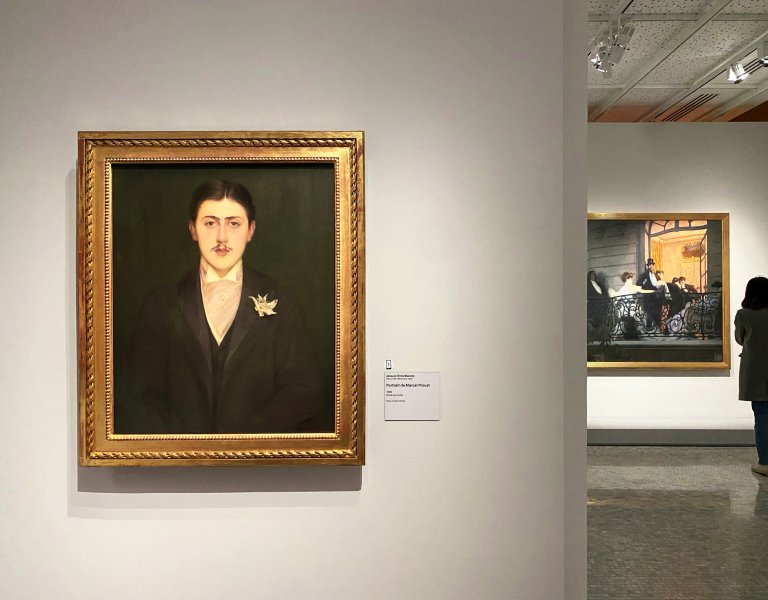
The Paris of Marcel Proust, seen in 5 places
The great event of the start of 2022, the exhibition dedicated by the Carnavalet Museum to Marcel Proust (1871–1922) to mark the 150th anniversary of his birth, brings the Paris of the writer back to life: the key places of his youth, the salons he frequented, the places that inspired him... Let’s walk together, making five stops, through the Paris of a literate life.
1. A return to the Lycée… Condorcet, in the 9th arrondissement
Born in Paris’s 16th arrondissement, Marcel Proust was a pupil at the Lycée Condorcet between 1882 and 1889, after attending the Pape-Carpantier primary school courses.
Often absent on account of his poor health, Marcel was nonetheless a fervent student of literature who admired Anatole France and contributed to the lycée’s reviews.
The Lycée Condorcet was located in the district of Chaussée d’Antin and was frequented by the children of the intellectual bourgeoisie of the time: while a pupil there, Proust rubbed shoulders with Jacques Bizet, son of the composer of Carmen (1875), Georges Bizet, the future banker Horace Finaly, and the future historian Daniel Halévy.
The painting below by Jean Béraud, included in the exhibition, illustrates the atmosphere: Leaving the Lycée Condorcet (circa 1903).
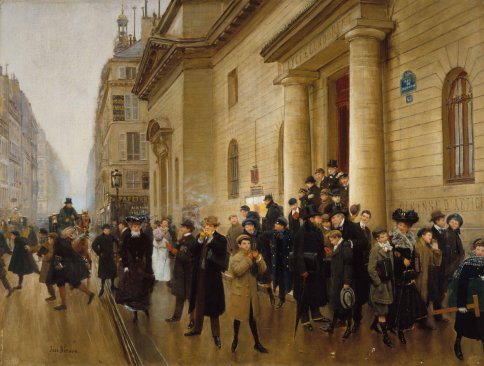
Jean Béraud, La sortie du lycée Condorcet, vers 1903
CCØ Paris Musées / Musée Carnavalet - Histoire de Paris
2. In literature’s most famous bedroom
“Time and again, I have gone to bed early”. This famous first sentence is a reminder of the importance of the writer’s bedroom to his creative process, and to which the exhibition devotes an entire room (the museum has owned it since the late 1970s).
His bed, a piece of the cork sheets he used to cover the walls, and a few pieces of furniture together recreate the writer’s most personal, familiar setting, and offer a glimpse of the place where he imagined and wrote one of the most extraordinary works in Western literature. He hardly ever left this room except at nightfall, when he went to meet his friends.
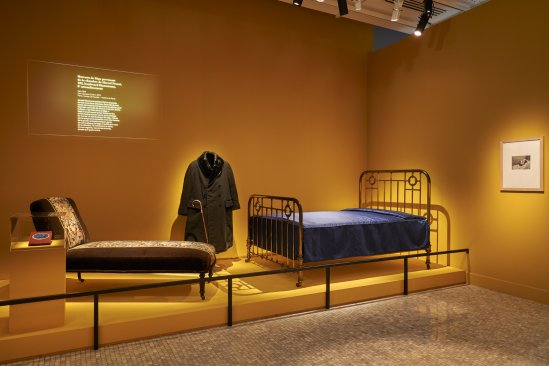
A view of the exhibition “Marcel Proust, a Parisian Novel”, at the Carnavalet Museum © Paris Musées / Pierre Antoine
3. The illustrious salon of Countess Greffulhe…
Marcel Proust found inspiration for many of the characters in the novel In Search of Lost Time among his friends and members of Paris’s high society: for example, the famous Countess Greffulhe was the model for the distinguished Duchess of Guermantes. Extremely beautiful and sophisticated (her taste in clothes was as famous as she was), this young aristocrat held a salon visited by many writers and intellectuals, including Anatole France. However, even though she impressed Proust, he was later rarely invited to her salon.
And Proust’s cousin, Count Robert de Montesquiou, provided the model for the writer’s portrait of Baron de Charlus.
Both these characters are represented in the exhibition in a vivid drawing of 1891 by Paul-César Helleu.
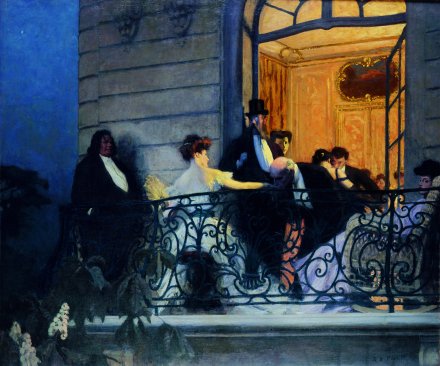
René-Xavier Prinet, Le Balcon, 1905-190
© Caen, musée des Beaux-Arts / Patricia Touzard
4. The Bois de Boulogne, the “place to be seen” for the Parisians of the time
Marcel Proust grew up in a Paris that had been transformed by the construction works commanded by Napoleon III, in which broad avenues gave the city its spacious, modern appearance.
The Bois de Boulogne and the avenue leading to it became essential places to be seen for the members of the city’s high society, who liked to parade and socialise there, as though it were a sort of open-air “salon”. The main characters in the Search enjoy walking there, taking in the sensual atmosphere of the “Elysian Garden of Women”.
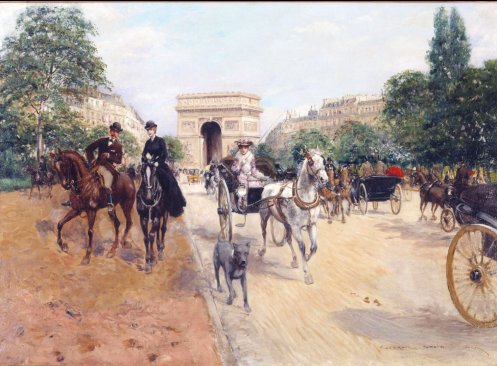
Georges Stein, Cavaliers et attelages, avenue du Bois, vers 1900 © Paris Musées / Musée Carnavalet
5. The Opéra Garnier, the spectacle takes place in the audit
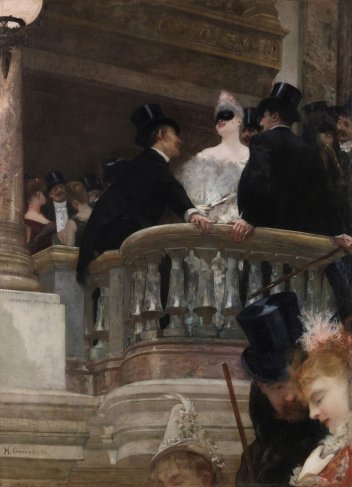
Henri Gervex, Le bal de l'Opéra, 1886 © Musée d'Orsay, Dist. RMN-Grand Palais / Patrice Schmidt
The Opéra Garnier is one of the most important places in Marcel Proust’s Paris.
The exhibition offers several views of it: tiny and pale at the far end of the prospect in Avenue de l’Opéra painted by Camille Pissarro in 1898, and a sumptuous interior in Masked Ball at the Opera by Henri Gervex (1886).
The latter is how Proust describes it: less focused on the setting than on the exchanges that take place between his characters (an intimate couple in the foreground, an amorous exchange in the background). Gervex’s painting illustrates above all the atmosphere and the art of living during an era suffused by worldliness... and beauty.
Informations pratiques
“Marcel Proust, a Parisian Novel”
Exhibition presented at the Carnavalet Museum until 10 April 2022,
23 Rue de Sévigné,
75003 Paris
Ticket reservation is advised on our online ticket office